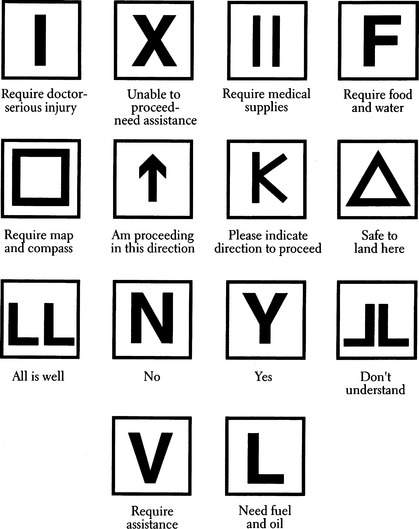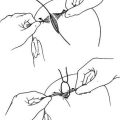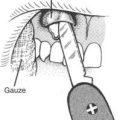GROUND-TO-AIR DISTRESS SIGNALS
If a party is trapped or lost, and helicopter or airplane search parties are likely to be in the region, it may help to attempt to signal the aircraft. One way that this can be done is by creating ground-to-air distress signals, either by marking an open field or a riverbank that is visible from the air by stamping out large (8 to 10 ft, or 2.4 to 3 m) designs in the snow (in an open area), or by attracting attention with display patterns of clothing, rocks, fire rings, or the like. Figure 246 illustrates some standard ground markings for communication.
The three signals that are recognized (and remembered) by most pilots are: three of anything—“distress”; large X—“unable to proceed” or “need medical assistance”; and an arrow—“proceeding in this direction.” Three fires (set 100 ft, or 31 m, apart) placed in a triangular configuration is a sign of distress to a passing pilot. Ground-to-air patterns should be large, composed of straight lines, and made up of colors that contrast sharply with the natural colors of the environment (royal blue is best). Small battery-powered emergency strobes are also useful. A heliograph mirror is a small signal reflector that can be accurately aimed to reflect sunlight at a distant object (such as an aircraft).






